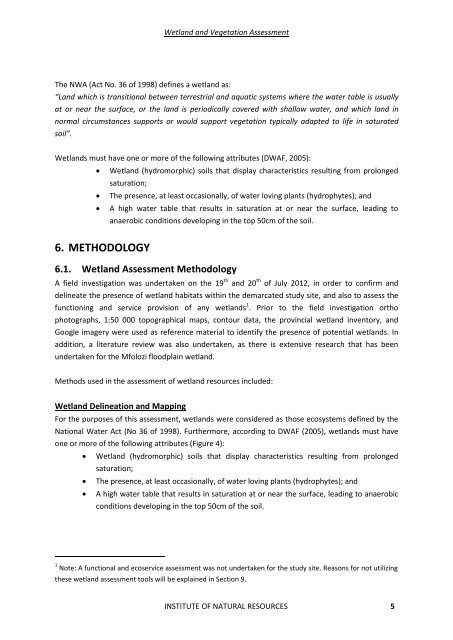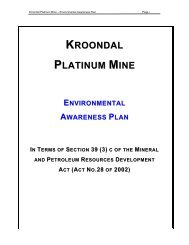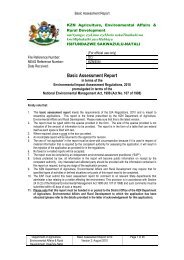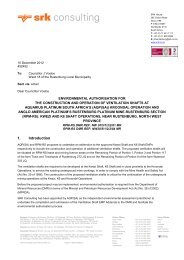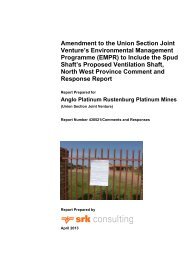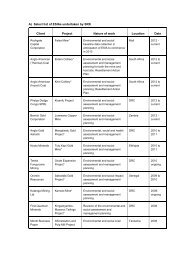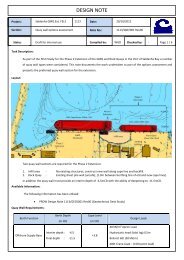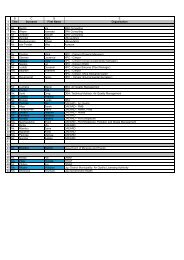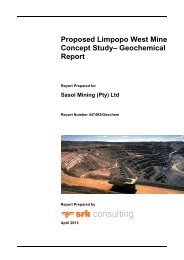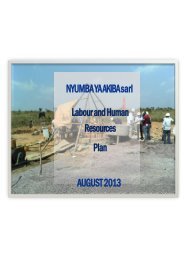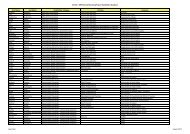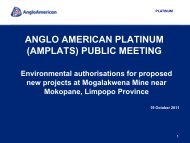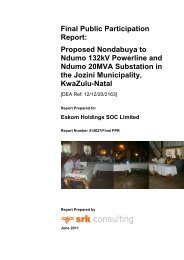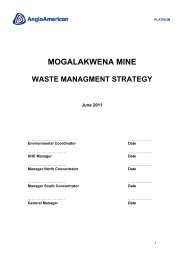WETLAND DELINEATION REPORT - SRK Consulting
WETLAND DELINEATION REPORT - SRK Consulting
WETLAND DELINEATION REPORT - SRK Consulting
You also want an ePaper? Increase the reach of your titles
YUMPU automatically turns print PDFs into web optimized ePapers that Google loves.
Wetland and Vegetation AssessmentThe NWA (Act No. 36 of 1998) defines a wetland as:“Land which is transitional between terrestrial and aquatic systems where the water table is usuallyat or near the surface, or the land is periodically covered with shallow water, and which land innormal circumstances supports or would support vegetation typically adapted to life in saturatedsoil”.Wetlands must have one or more of the following attributes (DWAF, 2005): Wetland (hydromorphic) soils that display characteristics resulting from prolongedsaturation; The presence, at least occasionally, of water loving plants (hydrophytes); and A high water table that results in saturation at or near the surface, leading toanaerobic conditions developing in the top 50cm of the soil.6. METHODOLOGY6.1. Wetland Assessment MethodologyA field investigation was undertaken on the 19 th and 20 th of July 2012, in order to confirm anddelineate the presence of wetland habitats within the demarcated study site, and also to assess thefunctioning and service provision of any wetlands 1 . Prior to the field investigation orthophotographs, 1:50 000 topographical maps, contour data, the provincial wetland inventory, andGoogle imagery were used as reference material to identify the presence of potential wetlands. Inaddition, a literature review was also undertaken, as there is extensive research that has beenundertaken for the Mfolozi floodplain wetland.Methods used in the assessment of wetland resources included:Wetland Delineation and MappingFor the purposes of this assessment, wetlands were considered as those ecosystems defined by theNational Water Act (No 36 of 1998). Furthermore, according to DWAF (2005), wetlands must haveone or more of the following attributes (Figure 4): Wetland (hydromorphic) soils that display characteristics resulting from prolongedsaturation; The presence, at least occasionally, of water loving plants (hydrophytes); and A high water table that results in saturation at or near the surface, leading to anaerobicconditions developing in the top 50cm of the soil.1 Note: A functional and ecoservice assessment was not undertaken for the study site. Reasons for not utilizingthese wetland assessment tools will be explained in Section 9.INSTITUTE OF NATURAL RESOURCES 5


